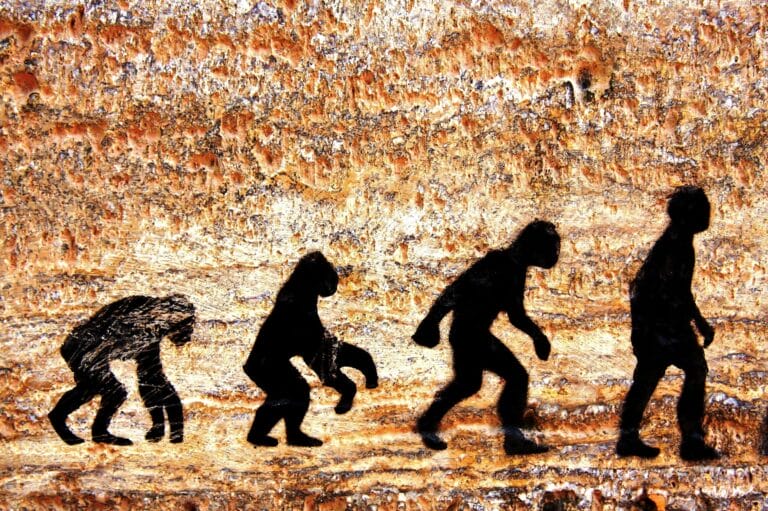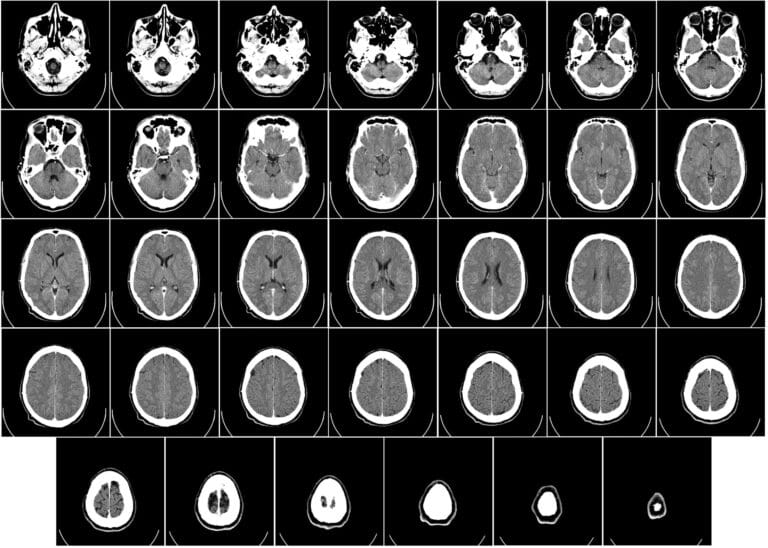Evolution of the human brain
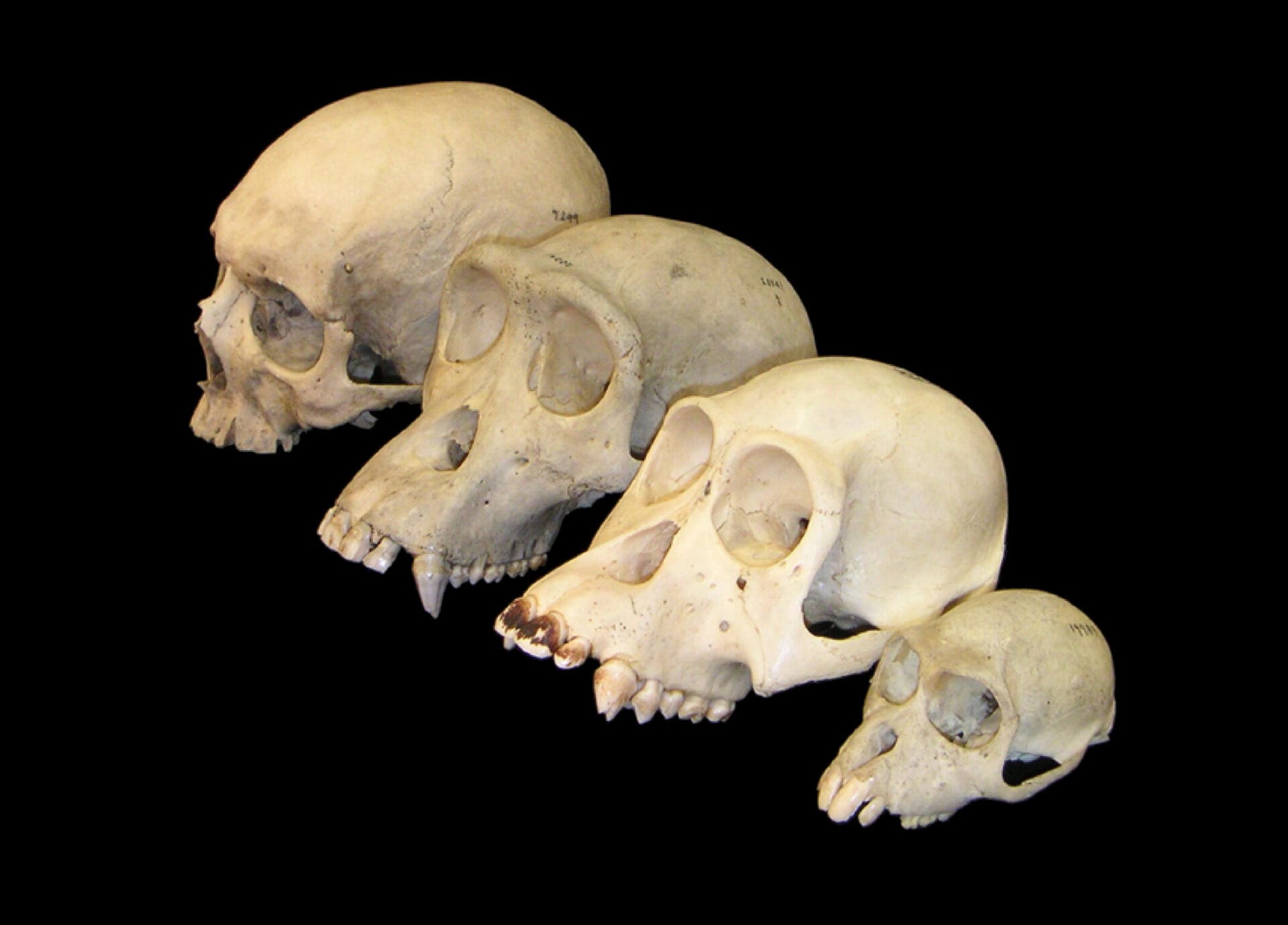
The human brain is staggeringly complex and the product of millions of years of evolution.
This is part 2 in our miniseries on human evolution. Read part 1 here: the evolution of modern humans.
Key terms
Evolution
The process by which organisms change and adapt by natural selection.
Species
A group of closely-related organisms that have common physical and genetic characteristics and are able to interbreed to produce fertile offspring.
- The brain has undergone some remarkable changes through its evolution – from clusters of cells that can sense changes in the environment to the complex, intricate human brain.
- By understanding how the human brain evolved, researchers hope to identify the biological basis of the behaviours that set humans apart from other animals – and were crucial for our survival and evolution.
The evolution of the brain
The most primitive brains are little more than clusters of cells bunched together at the front of an organism. These cells process information received from sense organs also located at the head.
Brains have evolved over time and the brains of today’s vertebrates have developed in both size and sophistication, with different regions specialised with distinctive structures and functions. For example, the cerebellum is involved in movement and coordination, while the cerebral cortex is involved in memory, language and consciousness.
By understanding how the human brain evolved, researchers hope to understand the biological basis of our behaviours and how this gave us an advantage early on in our evolution. Understanding the biology of the brain may also shed some light on many conditions linked to human behaviour, such as depression and psychosis.

Throughout its evolution, the brain has undergone some remarkable changes.
Brain size and intelligence
If you were to put a mouse brain, a chimp brain and a human brain next to each other and compare them, you’d notice that the human brain is around four times bigger than the chimp’s and around 15 times larger than the mouse’s. Even allowing for differences in body size, humans have unusually large brains.
It seems apparent that brain size makes humans more intelligent than the mouse. But when it comes to humans and closely related species, there isn’t a particularly strong relationship between brain size and intelligence. In fact, modern humans have slightly smaller brains than the Neanderthals, a closely related species that went extinct around 40,000 years ago.
Instead, it’s the brain structure and complexity that influences intelligence between species.

Humans have the largest brain in proportion to their body size of any living creatures.
When it comes to brains, size isn’t the whole story.
The skulls, and presumably brains, of our evolutionary ancestors are different in shape to modern humans. There are also some interesting differences when we compare the pattern of brain growth in humans to chimpanzees, our closest living relatives.
Both human and chimpanzee brains grow steadily in the first few years. One reason for this is the hip and pelvis bones, which have to contend with the demands of delivering a large-headed baby. This is a major constraint on brain size at birth, so humans have evolved to extend the period of brain growth to include the newborn stage.
Compared to the chimpanzee, the shape of the human brain changes significantly during the first year of life. Shape can be influenced by environmental or genetic factors and during this period, the developing brain picks up information from its environment, providing an opportunity for the outside world to shape the growing neural circuits.
This is a process known as plasticity. This subtle difference in early development might have had big implications for our survival and evolution.
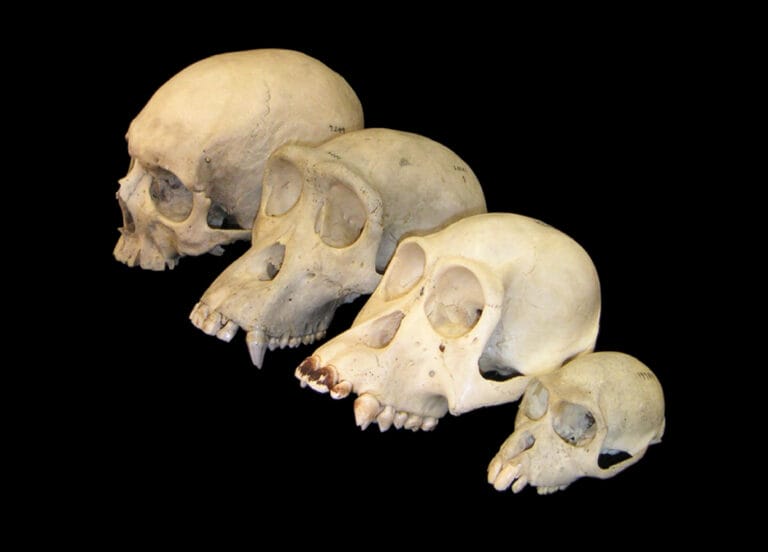
Language and brain development
Language, and the ability to convey information rapidly and efficiently to others, is probably the key characteristic that distinguishes us from other animals. Coordinating and planning would have provided a great advantage early on in our evolution.
We’re only just beginning to understand the various complex components of language. For example, to understand what someone is trying to tell us, we have to detect their message – through speech or other signals – and transmit it to the brain. Different parts of the brain then decipher that message, including dealing with the order of the words (the syntax) and what they mean (the semantics).
Memory plays a very important role in communication, enabling us to remember what words mean. For people who communicate with voice and hearing, an entire region of the brain is involved in working out how to reply, and coordinating the right muscles to make the right noises and shapes so we can convey our message clearly.

To comprehend what someone is saying we need to detect their message and transmit this information to the brain.
Comparing language with other species
Studying language by comparing different species is difficult because no other animals communicate in the same way.
Even when chimpanzees are raised in human families, they never gain verbal language skills. Although chimpanzees can learn to understand our language and to use ‘graphical’ symbols, they show little inclination to communicate anything other than basic information, such as requests to humans for food. Humans, by contrast, seem to be compulsive communicators.
Comparatively, some birds are talented mimics – but you couldn’t have a conversation with a Myna bird!

A master gene for language?
Perhaps the greatest insight into the evolution of language has come from work on the FOXP2 gene. Dubbed the ‘language gene’, FOXP2 is present in many vertebrates and plays a key role in communication – including birdsong in birds and echolocation in bats.
In 2001, Simon Fisher, Anthony Monaco and colleagues at the University of Oxford became particularly interested in FOXP2 after studying the DNA samples from a family with distinct speech and language difficulties. Around 15 members of the family, across three generations, were able to understand spoken words perfectly – but struggled to put words together to form a response.

Studying the FOXP2 gene has taught us more about the biological changes underpinning the evolution of complex language.
The pattern in which this condition was inherited, suggested that it was a dominant single gene condition. Another child, unrelated to the family, experienced similar symptoms and had a chromosome rearrangement mutation.
The researchers identified the area of the genome likely to contain the affected gene, before homing in on the child’s rearrange chromosome – the rearrangement slices through the FOXP2 gene. After sequencing the gene, the team found a specific mutation in the gene that was shared by all the affected family members.
This confirmed the importance of FOXP2 in human language. Simon and his colleagues went on to characterise FOXP2 as a ‘master controller’, regulating the activity of many different genes in several areas of the brain.
One key role is in the growth of nerve cells and the connections they make with other nerve cells during learning and development. Mutations in the FOXP2 gene interfere with the part of the brain responsible for language development, leading to the language difficulties seen in this family.
The evolution of FOXP2
The FOXP2 gene codes for the FOXP2 protein, which is very between species, suggesting it has not evolved much over time. For example, the mouse FOXP2 protein only differs from the human version by three amino acids. The chimpanzee version differs from the human version by two amino acids.
Studies with mice show that changing the mouse version of FOXP2 to the human version results in mouse pups with different wiring in certain parts of their brain. They also have subtle changes in the frequency of their vocalisations.
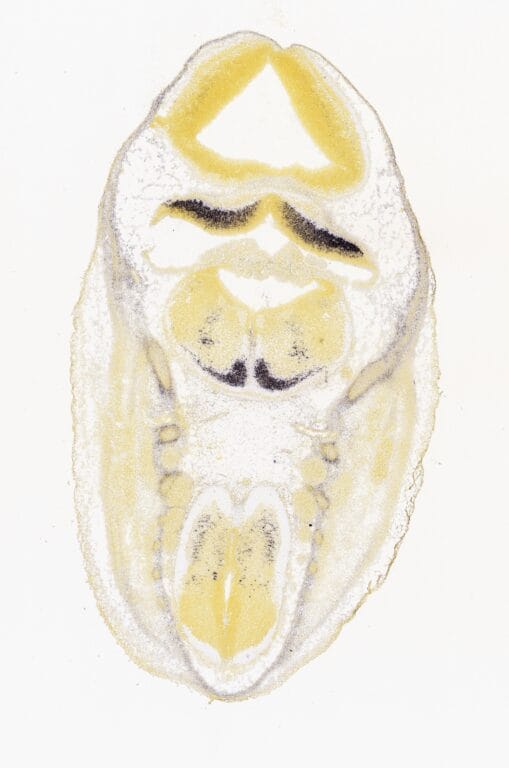
From studies like these, scientists have concluded that FOXP2 is involved in the brain’s ability to learn sequences of movements – although there are clearly many different genes and proteins involved in the process. In humans, this has translated into the complex muscle movements needed to produce the sounds for speech, whereas in other species it may have a different role, coordinating other movements.
Although the FOXP2 is very similar across species, the two changes in its amino acid sequence may have been important steps in the evolution of language in humans.

Neanderthals likely had some capacity for speech and communication.
FOXP2 and the Neanderthals
Neanderthals have generally been characterised, especially in pop culture, as a large, brutish species with little or no intellectual, social or cultural development. However, there’s no evidence to suggest that Neanderthals were significantly less intelligent than humans. Archaeological records suggest that they probably lived in small groups and due to their high energy needs, spent most of their time hunting.
Since Neanderthals had the same FOXP2 gene as modern humans, they likely had some capacity for speech and communication, including regions of the brain responsible for social activity. This likely improved their chances of survival in the harsh European environment.
However, other evidence suggests that the Neanderthal brain may not have been wired to support particularly effective communication and diplomatic skills. The Neanderthal brain was evolved to maximise their visual abilities, including larger eyes, so they could survive and hunt in the lower-light levels of Europe. This would have limited available space in the brain so it’s likely that they had smaller social regions than the modern human brain.
This may have made it difficult to develop social groups bound together by effective communication, providing another evolutionary advantage for early humans.
